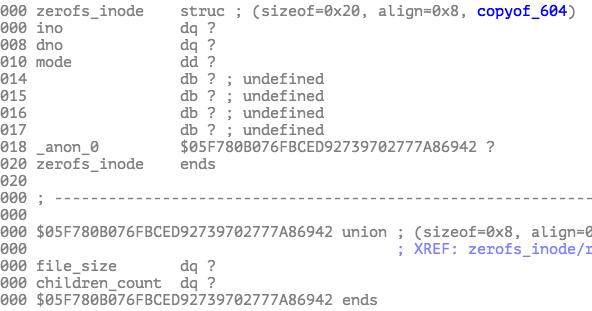1. 引言
2025 年 11 月 18 日,Cloudflare 遭遇了一次影响范围不小的故障,导致其部分服务在一段时间内出现明显异常、访问失败或性能下降;具体影响范围可以参考 Cloudflare 在官方博客中发布的复盘报告《Cloudflare outage on November 18, 2025》。
事后 Cloudflare 很快发布了详细的技术复盘报告,把这次故障的来龙去脉讲得比较清楚:直接诱因是一项数据库权限配置变更,而下游某些 Rust 服务在异常路径上的健壮性不足,被这次变更“精准命中”,最终演化成大面积的服务不可用。在复盘文章里,可以看到典型的 unwrap 使用导致程序在遇到异常数据时直接崩溃,这一点也迅速成了社区讨论的焦点。
unwrap 确实是这次事故的重要触发点之一,但如果只停留在“不应该用 unwrap”这个层面,我们能学到的东西其实很有限。在真实的工程环境里,数据库权限、配置项、安全策略,这类“看起来只是调一下配置”的变更,在研发和安全团队的日常工作中非常常见,而且数量巨大。很多时候,它们并不会被当成高风险操作对待,更不会被放到和“发一版代码”同等严肃的变更流程里去审视。
正因为如此,在大家都在吐槽 unwrap 的时候,我更想换一个视角:站在一个局外人的位置,只基于 Cloudflare 公开的技术文章,从“变更”的角度,来看看这次事故里有哪些稳定性和安全运维层面的经验教训,是我们在日常做配置 / 安全控制变更时可以借鉴的。
2. 事件回顾和 Cloudflare 的技术报告
在进入后面的讨论之前,我先按照 Cloudflare 官方技术文章里的信息,把这次故障的经过简单串一下。几个关键时间点(UTC):
- 11:05:数据库访问控制变更部署
- 11:28:影响开始产生(Impact starts)
- 13:05:对 Workers KV / Access 启用 bypass,影响降低
- 13:37:确认 Bot Management 配置文件为触发点,开始回滚/修复至 last-known-good
- 14:30:主要影响解除(Main impact resolved)
- 17:06:所有服务恢复(All services resolved)
在这个时间线里,Cloudflare 官方给出的故事大致可以拆成以下几步。
2.1 起点:数据库访问控制变更(11:05 UTC)
从官方时间线来看,这次事故的起点很清晰:11:05 UTC,Cloudflare 在一套用于生成 Bot Management 特征配置的数据库上,部署了一次权限相关的配置变更(database access control change)。
Cloudflare 在复盘里解释,这次变更的初衷是:
- 把原本“隐式”的表访问权限改成“显式授权”,
- 让分布式查询可以在真实用户账户而不是共享系统账户下执行,
- 这样才能对每个用户的查询更细粒度地评估访问授权和查询限额(access grants / query limits),从安全和资源控制角度把关。
问题在于:生成 Bot Management feature file(特征配置文件) 的那条查询并没有显式区分哪些库/表应该被统计进去。变更生效后,这条查询突然多拿到了一批原本不会出现的信息,导致:
- 查询结果的行数接近翻倍;
- 按这个结果生成的 feature file 体积也明显变大,特征数量远超正常水平;
- 这份“变胖了”的配置文件依然按原有节奏在全网周期性刷新和分发。
就变更本身来说,它在当时看上去更像是一条常规的权限/安全配置调整,而不是那种一眼就会被当作“高危大变更”的架构级操作。
2.2 症状出现:核心流量异常(11:28 UTC 之后)
官方文章在 “The outage” 一节里,展示了一张 5xx 错误量曲线图:原本很低的错误率在 11 点多突然抬升,并出现一段时间的反复波动。
在文章末尾的时间线表中,11:28 被标记为:
Impact starts. Deployment reaches customer environments, first errors observed on customer HTTP traffic.
对外部用户来说,这一阶段的直接表现就是:
- 大量站点返回 Cloudflare 自己的 5xx 错误页;
- Workers KV、Access、Dashboard、Turnstile 等依赖核心代理(Cloudflare 文中称为 core proxy,并用 FL/FL2 指代其不同代际/版本的核心代理组件)的服务出现错误或不可用;
- 整体 HTTP 流量表现为“时好时坏”的波动。
波动的原因在官方报告里也解释得比较清楚:
- feature file 每几分钟重新生成一次并分发到全网;
- ClickHouse 集群在逐步更新,只有已经应用访问控制变更的节点会生成“坏文件”;
- 每一轮刷新,有可能生成“好配置”或“坏配置”,然后快速推送,导致系统在“好文件 / 坏文件”之间反复切换。
2.3 定位过程:收敛到数据库 / 权限策略与 Bot Management 特征文件(11:28–14:30 UTC)
时间线显示,11:32–13:05 这段时间里,团队最初是沿着 Workers KV 错误和高流量 的症状在排查:
“The team investigated elevated traffic levels and errors to Workers KV service… mitigations such as traffic manipulation and account limiting were attempted…”
随着排障推进,Cloudflare 在 “The query behaviour change” 与 “Memory preallocation” 两节中,把技术链路写得很直白:
- 数据库层:访问控制变更后,查询时多返回了数据,响应行数接近翻倍;
- 配置生成层:用这条查询生成的 Bot Management feature file 跟着“变胖”,特征数量远超平时(文中描述为 “effectively more than doubling the rows in the response ultimately affecting the number of rows (i.e. features) in the final file output”);
- 核心代理层:core proxy 上的 Bot Management 模块,为了预分配内存和防止无界增长,对特征数量设了一个硬上限(200,正常使用约 60);
当超大 feature file 触发这个上限时,核心组件 FL2 的 Rust 代码在检查时调用了
unwrap(),在 Err 分支 panic:thread fl2_worker_thread panicked: called Result::unwrap() on an Err value
时间线中,13:37 这一行直接写道:
Work focused on rollback of the Bot Management configuration file to a last-known-good version. We were confident that the Bot Management configuration file was the trigger for the incident.
也就是说,到 13:37 前后,团队已经把问题清楚地收敛到这一链路上:
数据库访问控制变更 → 查询行为变化 → feature file 异常膨胀 → Bot Management 模块触发 unwrap() panic → 核心代理返回大规模 5xx。
2.4 处置与恢复:回滚配置与重启服务(13:05–17:06 UTC)
后续的处置流程在官方时间线里也有完整记录,可以粗略分成三段:
- 先压住影响面(13:05 起)
- 13:05:
Workers KV and Cloudflare Access bypass implemented — impact reduced.
- 做法是通过内部 bypass,让 Workers KV 和 Access 回退到 core proxy 的旧版本,虽然旧版本同样存在问题,但影响范围和程度都更小,因此整体错误率明显下降。
- 13:05:
- 修配置文件,恢复核心流量(13:37–14:30)
- 13:37:工作重点转向回滚 Bot Management 配置文件到 last-known-good 版本;
- 14:24:
- 停止生成与分发新的 Bot Management 配置文件;
- 使用旧版本配置文件的恢复测试完成;
- 14:30:
Main impact resolved. A correct Bot Management configuration file was deployed globally and most services started operating correctly.
- 清理长尾,全部恢复(14:30–17:06)
- 核心流量恢复后,剩下的是重启在事故中进入 bad state 的下游服务;
- 17:06 :
All services resolved. Impact ends. All downstream services restarted and all operations fully restored.
到这里为止,官方技术报告给出的“工程师视角故事线”就完整了:
- 11:05 的数据库访问控制变更改变了系统表查询行为;
- 被用于生成 Bot Management 特征配置文件的查询没有过滤 database,导致配置文件异常膨胀;
- 核心代理中的 Bot Management 模块在遇到这份“超大配置”时触发
unwrap()panic,引发大规模 5xx; - 通过 bypass 降低影响面、回滚 / 修复配置文件、重启下游服务,在 14:30 解除主体影响,17:06 完成收尾。
到这里为止,我只是把 Cloudflare 在官方复盘里公开的内容,整理成了一条相对清晰的时间线和技术链路。换句话说:前面的所有事实,都是从那篇博客和时间线表里来的,我并没有也不可能掌握他们内部更多的细节。
接下来如果从变更和稳定性体系的角度往下展开,就难免会带一点推断和类比。这些推断有可能和 Cloudflare 内部当时的真实情况并不完全一致,也不代表我在评价或还原他们的具体决策过程,更谈不上指责。
更合适的理解是:把这次事故当成一个公开、细节足够丰富的案例,把官方给出的时间线和技术原因当作“题面”,后面的分析只是借这道题来反思我们自己在变更、稳定性上的潜在问题,看看能从中抽象出哪些对自己有用的经验教训。后文更关注机制与流程如何把风险收住,而不是复盘某个具体个人/团队的对错。
3. 从变更视角看这次故障
大家都在讨论 unwrap、错误处理不健壮,但真正把这一串问题引爆的,是一类我们日常也经常做的事情——改了一条权限 / 策略 / 配置。
这类操作在任何公司都很常见:收紧一下权限、加一条安全规则、改一条控制面配置。平时我们可能把它归类成“小变更”。这次事故对我们来说,也是一个“复盘”自查的机会,可以就把它当成一次典型的高危配置 / 安全策略变更事故,按变更的几个阶段回头看看:如果同样的事发生在我们系统里,哪些环节我们自己也容易掉链子。
下面这些都是站在“做事的人”的角度做的“复盘”与自查,不是去评价 Cloudflare 做得好不好。
3.1 影响面评估:这次变更到底多“高危”
先看第一步:这次到底改了个什么东西。
这一类权限 / 策略变更,在日常开发里,很容易被当成“就改一下配置”——不改代码、不发新版本,只是调整一条规则,看起来像是低风险操作。
评估风险大小至少可以拆成两个维度:
- 所处平面和作用域(它在哪一层)
- 是某个单体服务的本地配置,只影响局部行为;
- 还是控制面 / 安全面上的全局策略,例如:认证授权、集中配置、路由 / 流量调度这类“公共基础设施”。
- 依赖关系和影响链路(后面连着谁)
- 有多少关键服务 / 关键路径依赖这条配置 / 策略才能继续往下走;
- 它是不是在多条核心链路上的必经节点,是典型的 critical path / chokepoint 还是一个 leaf node。
Cloudflare 这次动的是核心组件访问数据的权限,从复盘描述看,很难把它归类成一个“局部、低影响的本地配置”。在任何一个复杂系统里,这种“全局共享 + 被关键链路反复访问”的配置,按理都应该直接归到高危变更的范畴。
现实里又有另一个情况:历史系统经过多年演化,上下游依赖关系复杂。但我觉得这时候,仍然有必要做一些自查,多思考几个问题,比如:
- 如果这个配置完全失效,用户侧最直观的症状会是什么,最坏情况下,它会导致什么样的影响?
- 有哪些关键服务 / 功能一定要依赖这条配置?
- 过去的故障 / 变更记录里,有没有跟它相关的坑?
如果这些问题都答不出一个相对有把握的结论,并不代表这个变更风险就低,反而说明:
我们现在对它的影响面认知还不够清晰,这种情况下,把它当成“小配置改动”随手上生产,其实是比较危险的。
3.2 事前验证:先在可控环境里把“正常”和“异常”都走一遍
如果可以在一个安全的测试环境里先行验证,有可能先暴露这个问题。
有些人平时做配置 / 策略变更,习惯往往是很简单的:
改完之后在控制台点两下、跑一跑页面,发现“看起来还能用”,然后就上生产了。
如果事先没认真在测试环境里验证一遍,直接上生产环境变更就等于是给未知行为兜底。
对这类高危变更:
- 上生产之前,先在测试 / 预发环境完成测试,如果是阻断策略,也可以通过日志观察比对验证;
- 在这个过程中,不需要穷举所有异常,但至少要有意识地想一想、看一看:
- 配置 / 策略拿不到、读错了、大致会长成什么样;
- 系统在这种情况下,是还能撑住,还是直接炸掉。
大规模系统里,确实不可能在测试环境推演所有坏情况,这个目标本身就不现实。
但在上生产之前,至少要做一件事:不要把“配置 / 策略永远没问题”当成默认前提,而是先在一个相对安全的环境里,确认一下最基本的正常和异常场景,是否符合预期。
3.3 灰度:别一上来就全网生效
即使测试 / 预发环境都跑过了,生产一定会面临更复杂的情况:真实数据、边缘场景、奇怪的调用链、历史遗留配置,都会叠加进来。所以有计划的分批次灰度发布非常重要。几种比较常见、也比较实用的手法:
- 按范围灰度
- 按 Region / 机房 / 用户群 / 业务线分批;
- 第一批尽量选影响范围小、可观测性好的对象。
- 先监控,再执行
- 安全策略先以 log-only / monitor-only 的方式 dry run 跑一段时间:
- 记录“如果现在真执行,会拦掉哪些请求”;
- 统计“会放过哪些我们不希望放过的请求”;
- 没有明显问题,再切到 enforce 模式。
- 安全策略先以 log-only / monitor-only 的方式 dry run 跑一段时间:
- 做好灰度计划
- 提前定好:灰度的批次,达到什么要求,我们就可以往下放一批;
其实很多时候问题不是“没做灰度”,而是这类配置 / 策略从设计第一天起,就没有灰度控制的能力。当然,如果某条配置一上来就只能全局生效,而且它又处在核心链路,那它本身就是一个需要去解决的技术债。
3.4 观测能力与快速恢复:让影响可见可止血
出问题这件事本身很难完全避免,那接下来就看两件事:
- 出了问题,能不能被及时观测到,并且尽快把异常与本次变更关联起来;
- 能不能快速拉齐相关方,迅速止血。
变更发起者(变更 owner)需要对此负责,对高危配置 / 策略变更来说,变更 owner 的责任不只是“把变更改对”,而是要在发起变更之前,就把下面两点想清楚、准备好,并落在 SOP 中:
- 如何判断这次变更是否按预期生效、有没有带来额外副作用;
- 一旦出现异常,应该如何处置,触发什么条件需要回滚或熔断。
3.4.1 观测:变更 owner 要先把观测指标定好
业务侧的观测一般比较完备。但变更的 owner 并不一定有如同业务一样完备的观测能力和视角。变更 owner 需要在变更执行前,把与本次变更直接相关的观测能力先对齐好。对于 SRE、安全这类跨多方的变更,这个过程往往离不开跨部门协同。
可以具体拆成几件事:
- 先列清楚:这次变更可能影响哪些链路、哪些指标
- 我改的是一条安全策略 / 配置规则,它会作用在:
- 哪些入口(网关、CDN、API 网关…);
- 哪些下游(认证、业务服务、数据库 / 缓存…);
- 哪些用户 / 租户 / 区域。
- 对每一类影响,预先想一遍:
- 正常情况下,哪些指标会有轻微波动(例如某类请求被拒绝率小幅上升);
- 异常情况下,哪些指标会率先发生明显异常(例如某几个接口 5xx 暴涨)。
- 我改的是一条安全策略 / 配置规则,它会作用在:
- 与上下游一起梳理异常观测指标和告警信号
- 在发起变更前,变更 owner 主动与相关方对齐两类信息:
- 各方现有的关键观测指标和告警规则:出现异常时优先关注哪些 dashboard / 告警;
- 在变更相关的日志 / 指标里,是否需要增加哪些字段,以便后续快速按维度筛查。
- 理想的状态是:
- 在变更 owner 自己的 dashboard 里,可以看到这次变更涉及的上下游关键指标;
- 所有人都清楚“这次变更要重点盯哪几个指标、哪些异常信号一出现就需要进入处置流程”。
- 在发起变更前,变更 owner 主动与相关方对齐两类信息:
- 在监控 / 日志里给变更本身留“痕迹”
- 相应的变更系统,至少要做到:
- 能够区分不同的配置 / 策略版本;
- 能够在日志或查询里,把“使用新配置 / 新策略”的请求、租户、区域筛选出来。
- 相应的变更系统,至少要做到:
回到这次故障上,本身系统的观测也是有一定问题的,unwrap 导致panic级别的问题应该被捕获并且告警。但如果变更 owner 可以多想多做几步,或许能够更快速地把故障指征归因到他的变更上。
3.4.2 响应协同:以快速止血为目标
这次 Cloudflare 故障,从业务异常到定位到特定权限 / 特征文件变更导致的问题,过程拉得很长,很可能的原因是,变更信息没有在上下游充分同步,处置现场一开始也没有足够意识到“这波异常和哪一次变更高度相关”。
从变更 owner 的视角,可以关注以下几点:
- 变更的“共同上下文”要统一
- 每一次高危变更都要有明确的变更 ID / 版本号 / 影响范围(租户、区域、实例批次等),确保上下游知晓;
- 定义好 SOP,关键指标要提前对齐好
- 结合上文对齐好的观测指标,提前约定好异常指标出现后的处置动作。
- 快速恢复动作尽量简单:先按预案降级或回滚,优先保障可用性,安全 / 合规问题通过后续补偿措施兜底。
- 降级/熔断设计
- 临时关闭某个依赖路径,不再调用这条有问题的链路;
- 将某些策略从“强制阻断”降级为“仅记录 + 限流”;
- 对下游返回一个可预期的降级结果,而不是继续把异常往更深的地方传。
- 恢复链路尽量简单,避免循环依赖
- 典型的循环依赖场景:
- 回滚配置要通过同一套控制面 / 配置系统下发,而这套控制面此刻就因为这次变更不可用;
- 执行回滚需要某些权限 / 认证链路,碰巧这次改的就是这层;
- 回滚脚本依赖的一些后端服务也在故障链路里,导致脚本半路就跑挂了。
- 典型的循环依赖场景:
- 通过演练把这一套联动跑顺
- 围绕典型高危变更,进行演练。演练不只是看“回滚脚本能不能跑通”。而是验证 SOP 中的观测指标能否与故障场景关联,并及时发起恢复操作。
- 演练暴露出来的缺口,都应该复盘更新到 SOP 里。
4. 写在最后
首先要给 Cloudflare 点个赞:愿意把问题摊开、把细节讲清楚,是一种非常好的文化。对我们这些旁观者来说,这样的复盘既能照出问题,也能当作一次很好的演练材料。
在这种上下游链路极其复杂的系统里,一条变更真正会影响什么,很难提前预判。跨部门变更管理、观测、响应尤为重要。这类跨域风险,往往需要横向团队做中枢。
尤其是对偏上游的同学来说,比如安全运营、策略平台,日常做的很多事情看上去只是“调一条规则”“收紧一点权限”,但站在全局视角,往往就是高风险动作。不要把配置、权限、策略当成理所当然“安全”的东西。如何在团队里把风险意识、影响面判断、事前预案这些东西沉淀成可复制的能力,而不是只靠少数人的经验,需要长期系统性地建设。





